Non-Vintage Champagnes: They are Getting Better and Better!
by Ken Gargett
In the world of champagne, non-vintages have become a bit of a paradox in recent years. When I first became interested in wine, I was fortunate to meet several winelovers with great cellars who were incredibly generous – and are still good mates today. Back then, we often met for lunch (still try to when we can). There were a few unwritten, even unspoken, rules.
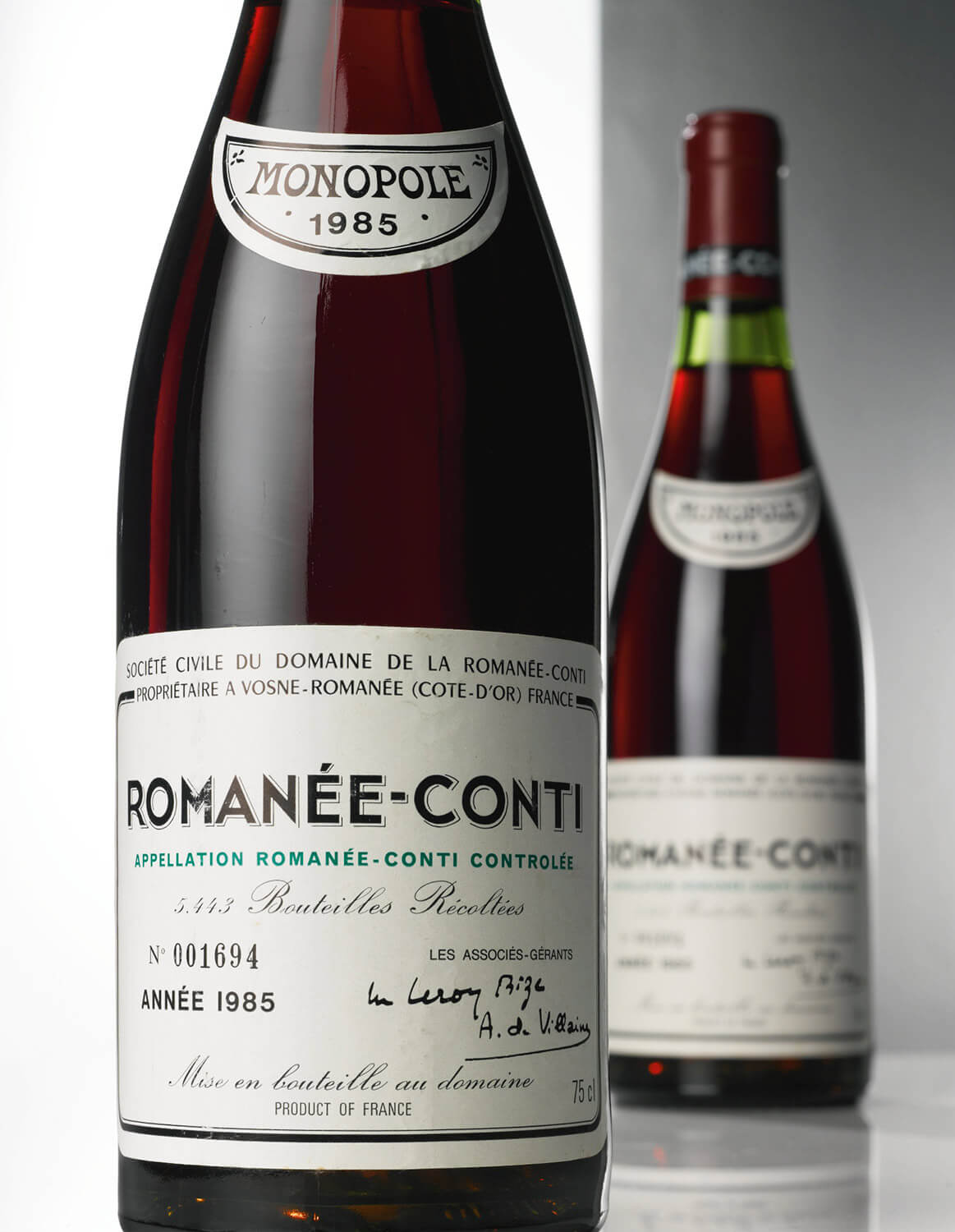
Domaine de la Romanée-Conti
Back then, if there was not at least one bottle of DRC on the table, then it was not a serious lunch (and the jury was out on whether Echezeaux or Grands Echezeaux counted), probably just a quick bite. Notwithstanding the Burgundy, Bordeaux ruled, so Firsts or Super Seconds from top vintages went without question.
A bottle of vintage port was as close to compulsory as possible. Lunch would start with a good champagne.
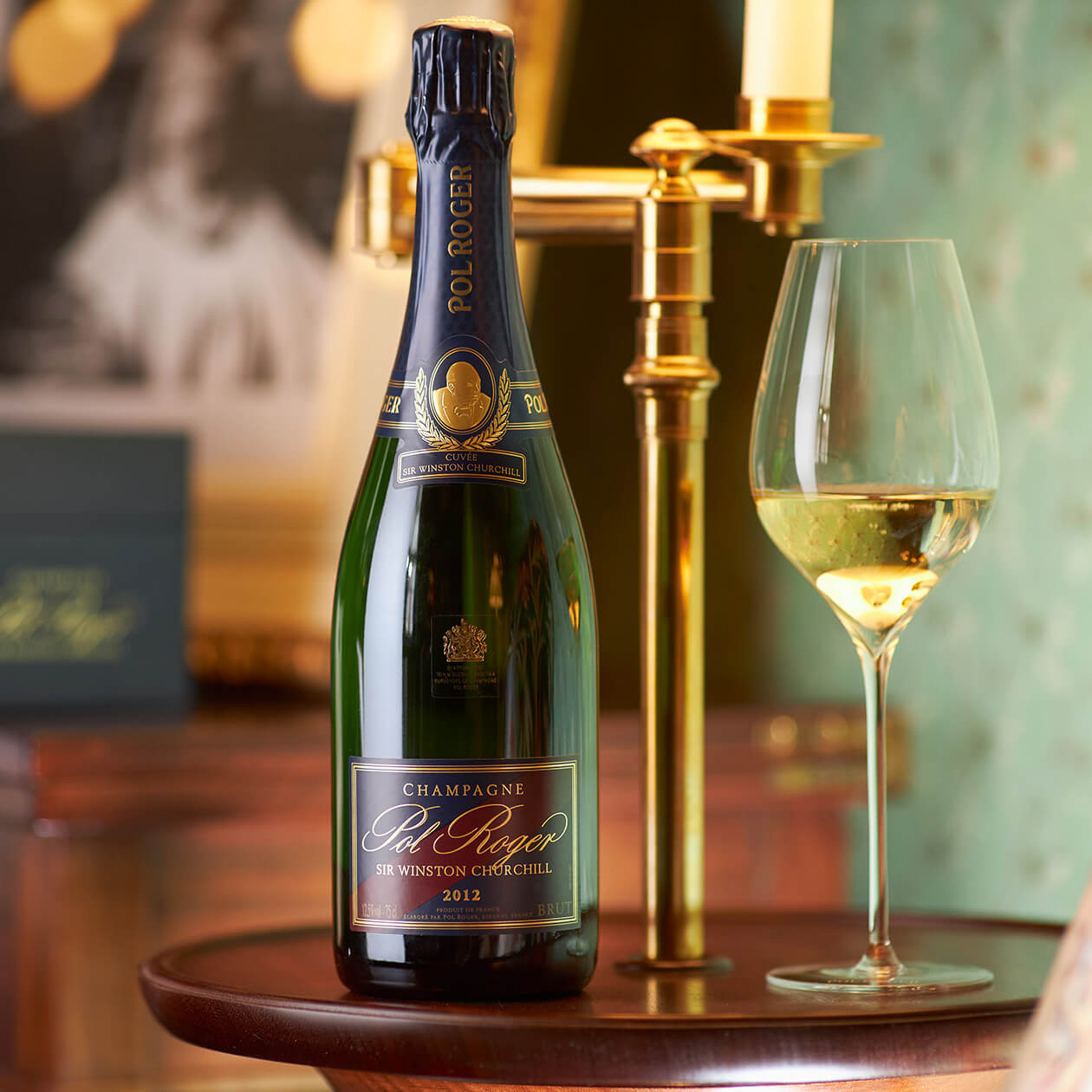
Pol Roger Sir Winston Churchill 2012 champagne
Before the inevitable accusations of excess and scorched earth drinking, I should point out that the guys had filled their cellars from a time when access to the great wines was not an issue and pricing was simply ridiculous, a level that today’s winelovers would think was pure fantasy.
————————————————————————————————————–
—————————————————————————————————–
I should add that while I was most fortunate with all this, it really wasn’t that long ago. The rise in prices for top wines has been steep and somewhat sudden. And not likely to change. But we have digressed.
I mentioned a good champagne. These days, at such lunches and events, the champagne would most likely be what we think of as a prestige champagne – Doms, Cristal, Rare, RD, Sir Winston and so on. Back then, it was almost always a vintage champagne.
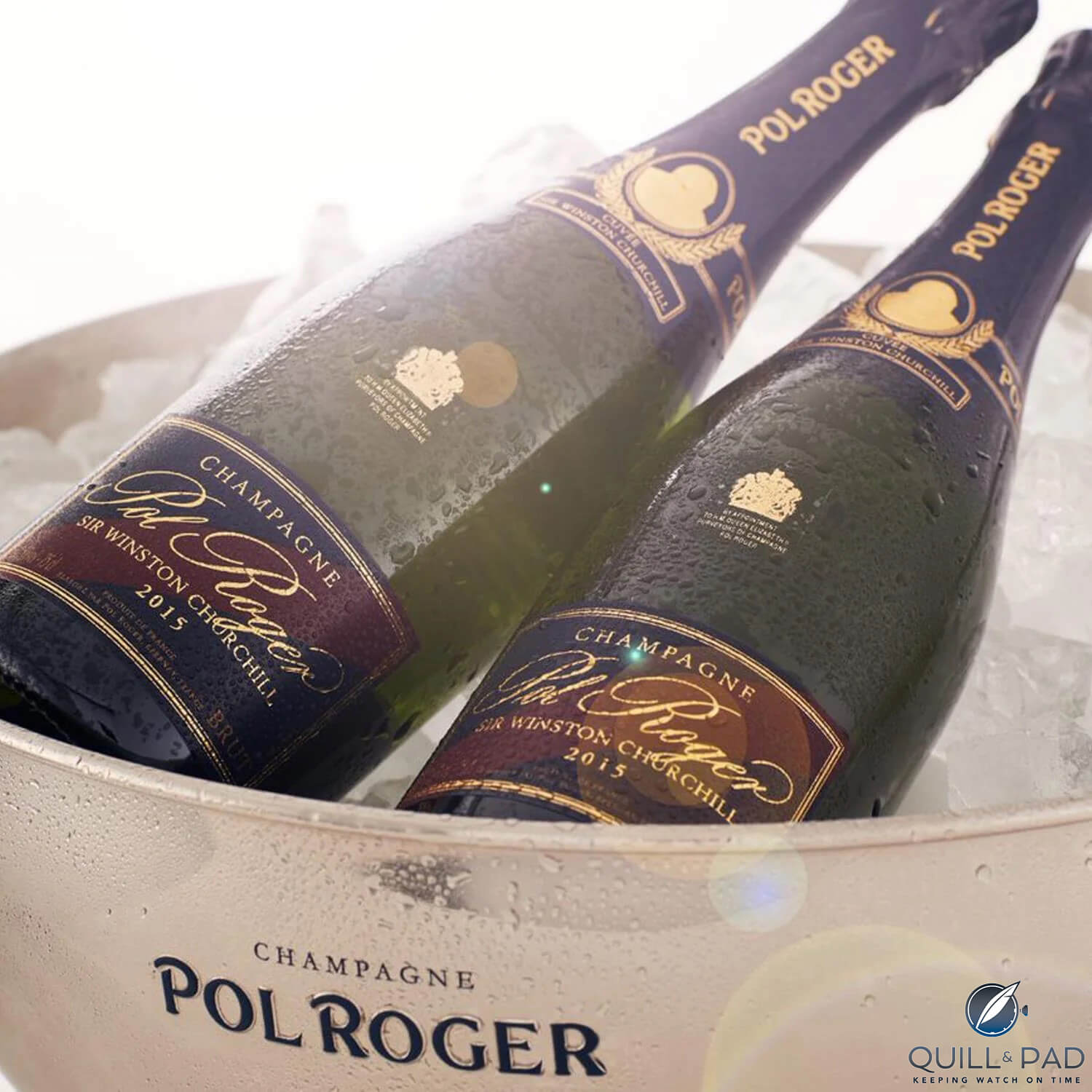
Pol Roger Sir Winston Churchill 2015 champagne
Indeed, I couldn’t guess how much vintage Pol we went through.
There were a few other rules. The port had to be vintage, and most certainly not a tawny. There would usually be a white, and anything other than a Grand Cru White Burgundy was unacceptable. And non-vintage champagne was simply unthinkable.
In those days, Australia imported a higher percentage of vintage champagne compared to NV, than anywhere else. Today, that has been completely reversed and we are now importing a higher percentage of NV than almost anywhere.
—————————————————————————————————–
—————————————————————————————————–
Then and now, non-vintage champagne formed by far the largest portion of a Champagne House’s production. The line put forward by all Houses was that their NV was identical from vintage to vintage.
Reliability was crucial. The idea was that whether one bought a bottle in London, New York or Timbuctoo, it would be exactly the same. Houses believed that consumers wanted that dependability.
Of course, winelovers knew full well that the Houses were telling porkies. Sure, each House had its style and the NVs from different year were very similar, usually, but the vagaries of vintages simply meant that identical was a very big ask.
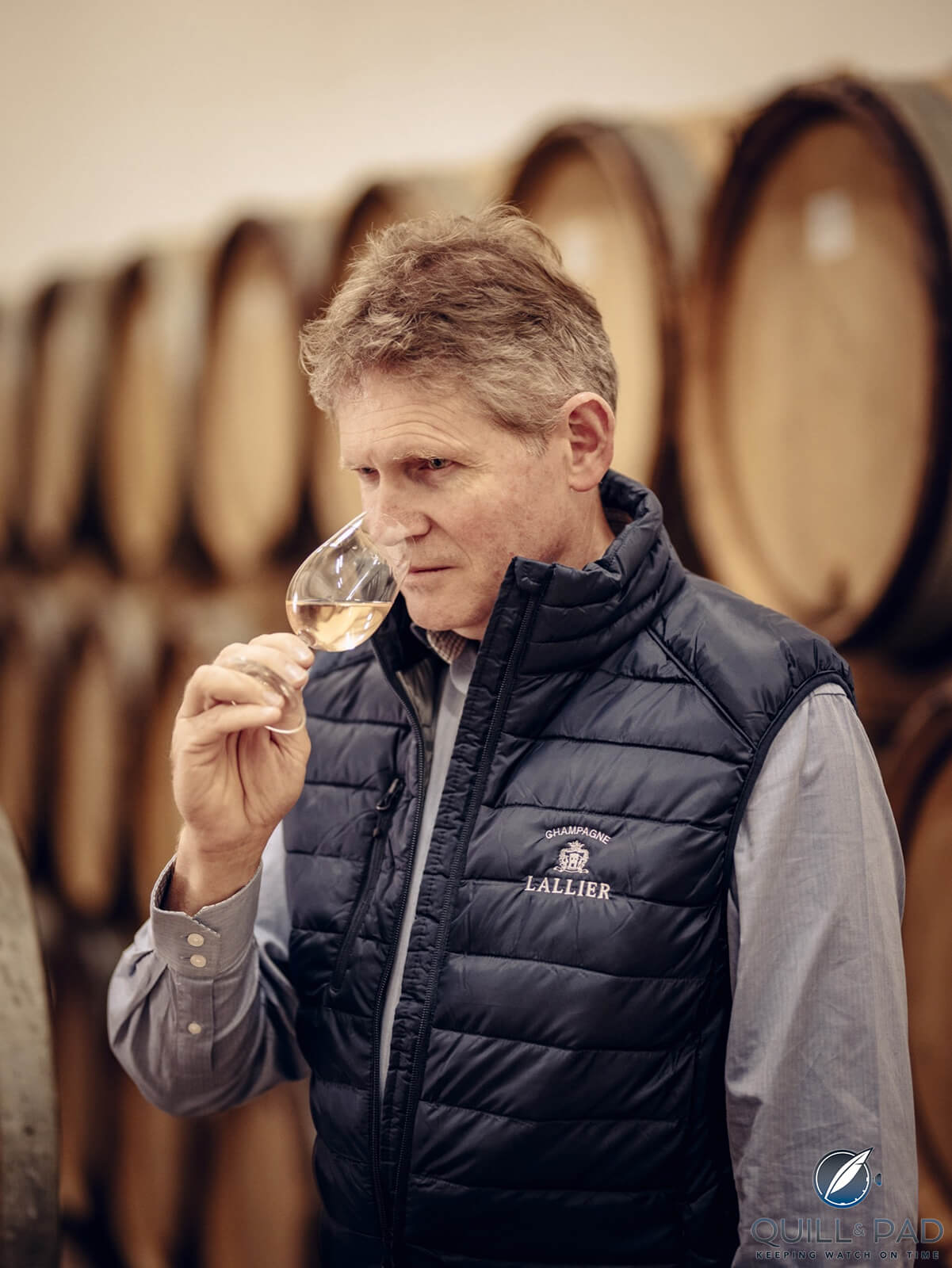
Dominique Demarville, chef de cave at Champagne Lallier
The consummate skill of the blenders meant that very often, the wines from year to year were so close it hardly mattered. Vintage champagnes would have the House DNA, but they would also reflect vintage conditions, so differences from year to year were expected. Following these vintages and exploring their differences was half the fun.
That minor variations happened, year to year, has been known for some time. In his superb ‘Champagne’, written in 1986, Tom Stevenson, acknowledges this when he says, that there were “several houses making non-vintage Champagne of a disappointing or variable quality (their numbers swelled in the early 1980s after the short harvests of 1978, 1980 and 1981)”.
He goes on to note that the best wine of a house could come from this style, but that vintage champagnes enjoyed an extra premium because of public demand. This is true but also it is a bit bizarre as most of the chefs du cave with whom one speaks will admit that their non/multi-vintage wines are the hardest to make.
—————————————————————————————————–
—————————————————————————————————–
The very simple version of how non-vintage champagne came about is that Champagne was a marginal grapegrowing region, so close to the edge that it was not possible to make good wines every year. For so many years, a House would be likely to declare no more than three, perhaps four, vintages a decade. Hence, the concept of blending various vintages grew, allowing a House to supply customers with wines every year.
Thin, lean years would see material from richer vintages; high acid years would benefit from a dollop of vintages with lower acidity, and so on. The aim was to ensure that these wines were the same, or as close to as possible, every year so a customer could feel comfortable buying them.
It was these wines on which the reputation of a House rose and fell, understandable given that around 80 to 90% of all champagne is non-vintage.
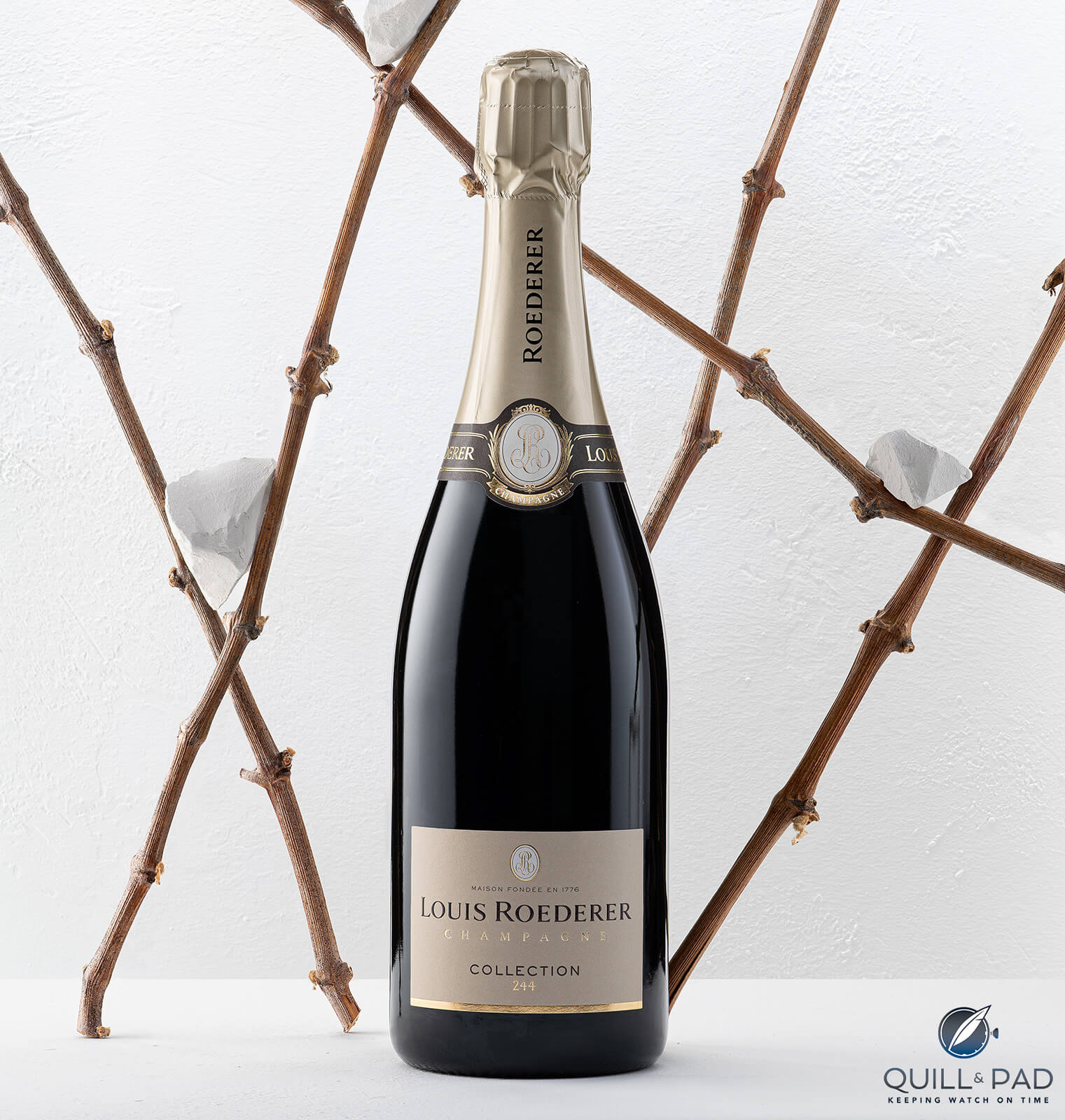
Louis Roederer Collection 244 NV champagne
Even the regulations give the nod to vintage wines over NV. An NV needs to spend only fifteen months on lees, compared to the three years necessary for a vintage champagne.
But there were some exceptions, where non-vintage champagnes did rank with the very best. Krug was often cited as an example. Laurent-Perrier with their Grand Siècle, always a blend of three vintages bar some experiments for the American market back in the 90s, was usually considered the finest of the non-vintage prestige champagnes.
—————————————————————————————————–
—————————————————————————————————–
Recent years have seen a revolution for non-vintage champagnes, a revelation for consumers. Finally, there is acknowledgment that there is variation with these wines, and that they can be truly stellar. We have looked at several over the years.
We also need to bear in mind that climate change is bringing about major changes in many winegrowing regions, perhaps none more so than Champagne. Instead of only a couple of vintages a decade allowing for the release of a vintage wine, now we see releases almost every year from some producers. As Champagne becomes less and less marginal, this will increase.

Jacquesson Cuvée No.742 Extra Brut NV
It was at Jacquesson that the understanding and acknowledgment of the minor variations on a theme, which is the reality of non-vintage champagnes, really started. Some years ago, Jean-Hervé Chiquet (the two Chiquet brothers have since sold the House), explained it all to me. The brothers had taken over from their father and there were considerable differences between the way they wanted to make champagne and the way their father did.
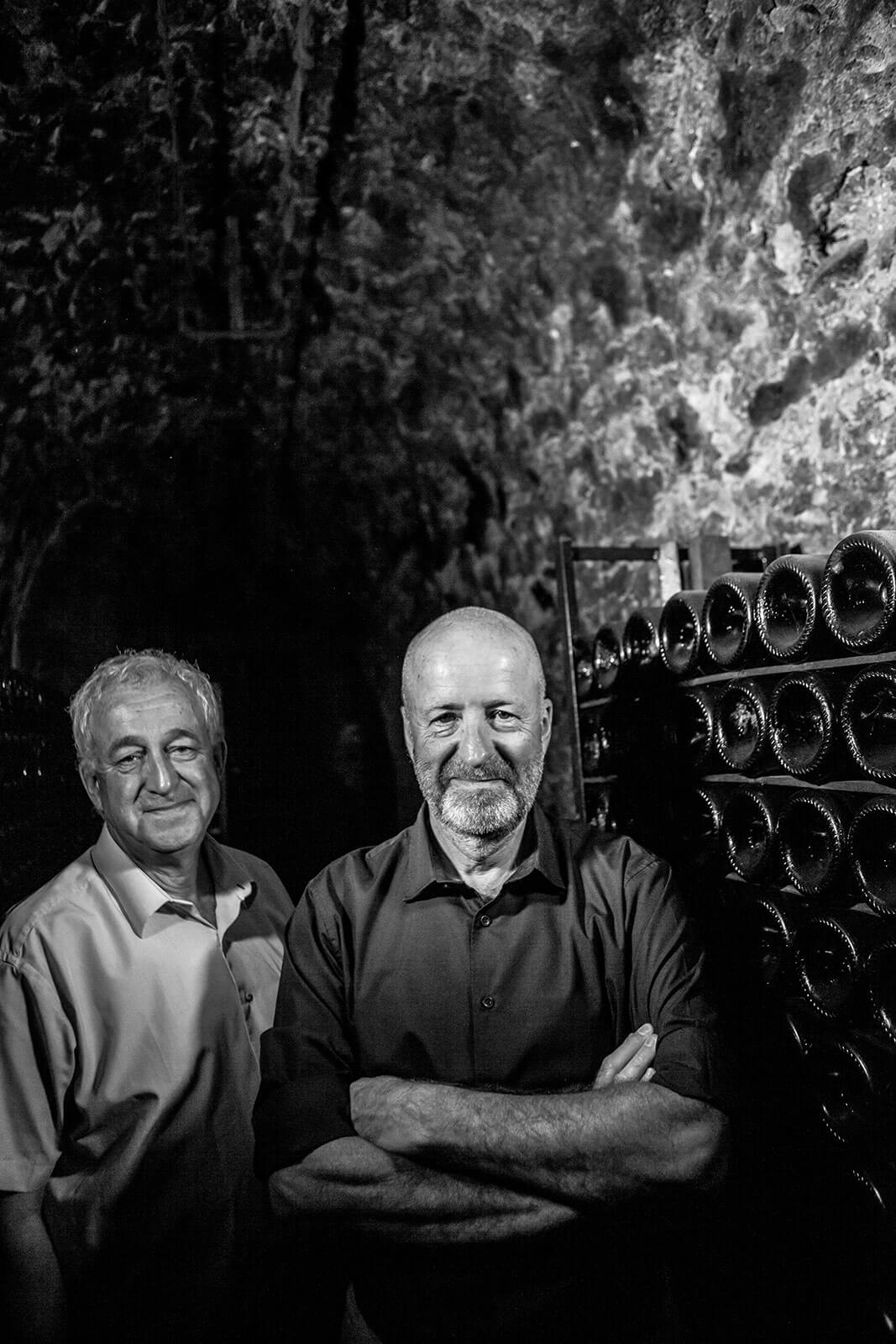
Laurent and Jean-Hervé Jacquesson
They found themselves having to sell the stocks in the cellar, which were wines made by their father and which they were, to put it mildly, not overly enamoured of. They revamped the range, but it takes time for champagnes to work through the system. It was only in 2019 that they finally got through all the old champagnes and reserve wines.
—————————————————————————————————–
—————————————————————————————————–
Since then, everything has been from the new era, but the frustration dates back well before this. 1997 was a very good vintage for Chardonnay, even though it is not well recognized as a good vintage year (if Salon releases a vintage, you can be pretty certain that it is a good Chardonnay year, if nothing else).
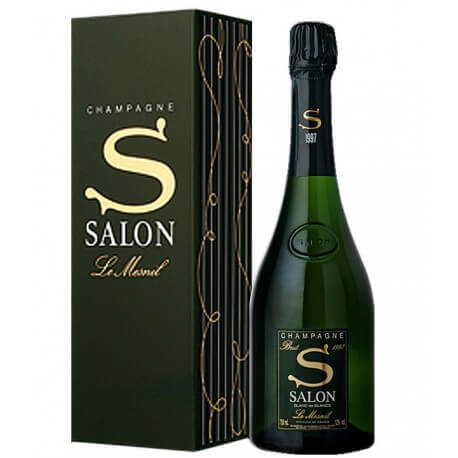
Champagne Salon 1999
They were working on the Chardonnay contribution to their Perfection NV and it was going extremely well, but they realised that they would be unlikely to be able to recreate the same quality/style again. So they had to dumb down that wine. In other words, they had to make and release a champagne that was not as good as it could have, just so it would not be obvious in future years.
They realised what utter nonsense that was, something that was not acceptable to the brothers. Subsequently, they moved to their numbering system.
Their records give the Number 1 to a cuvee made back in 1898. The new system for them began in 2000 with, according to records, the 728th champagne the House had made. So, it was dubbed Cuvee 728. And so it has continued. Their latest is Cuvee 747.
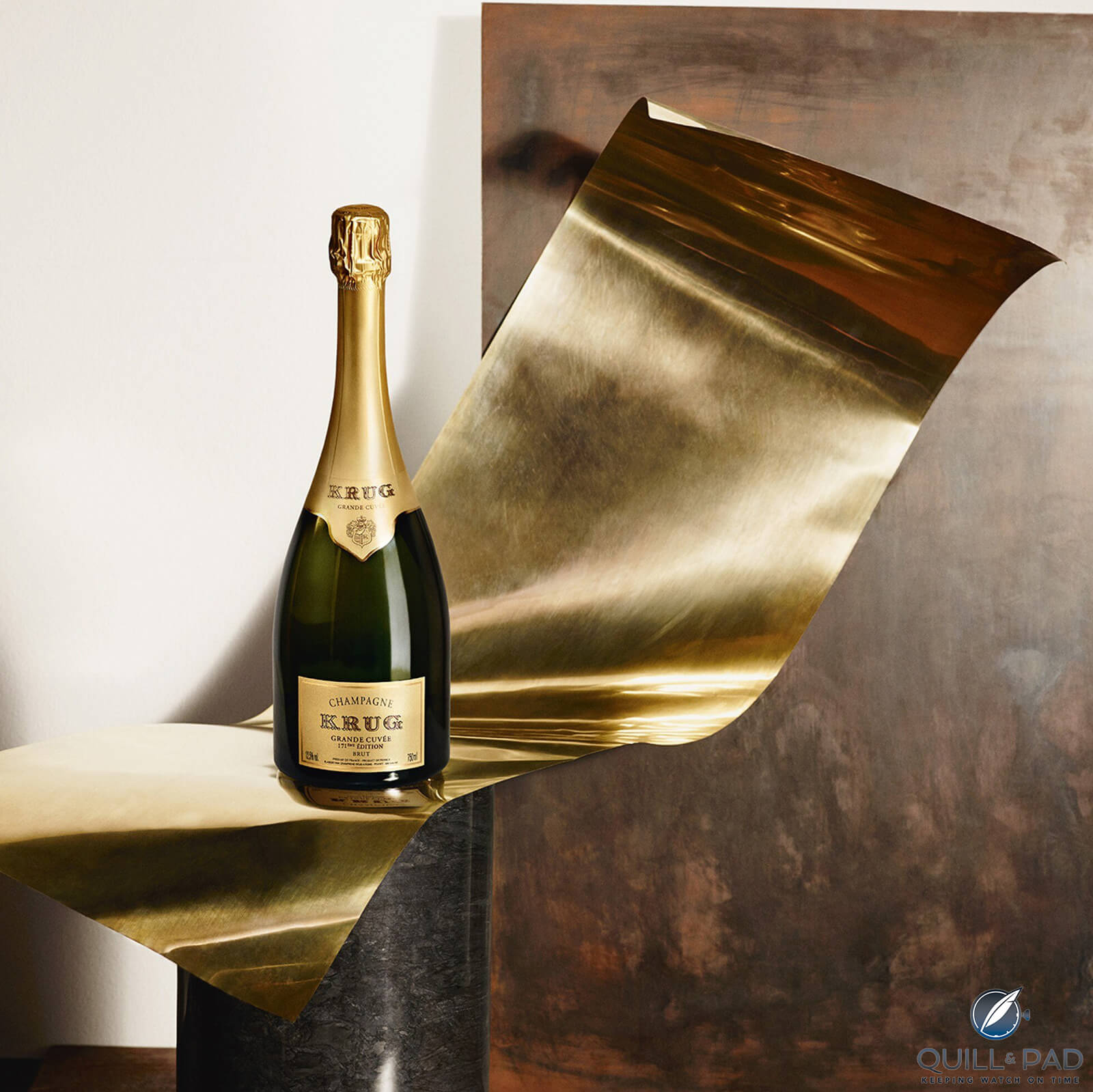
Krug Grande Cuvée 171ème Édition champagne
Krug, who much prefer the far more sensible term of multi-vintage, rather than non-vintage, saw the sense here and they now dub their wines with the edition. Over their history, they have released more than 160 different Grande Cuvees, the current name for their multi-vintage. The first to receive a number was the 163rd edition (base year 2007). The current release is the 172nd Edition, based on 2016 but with wines from ten other years included.
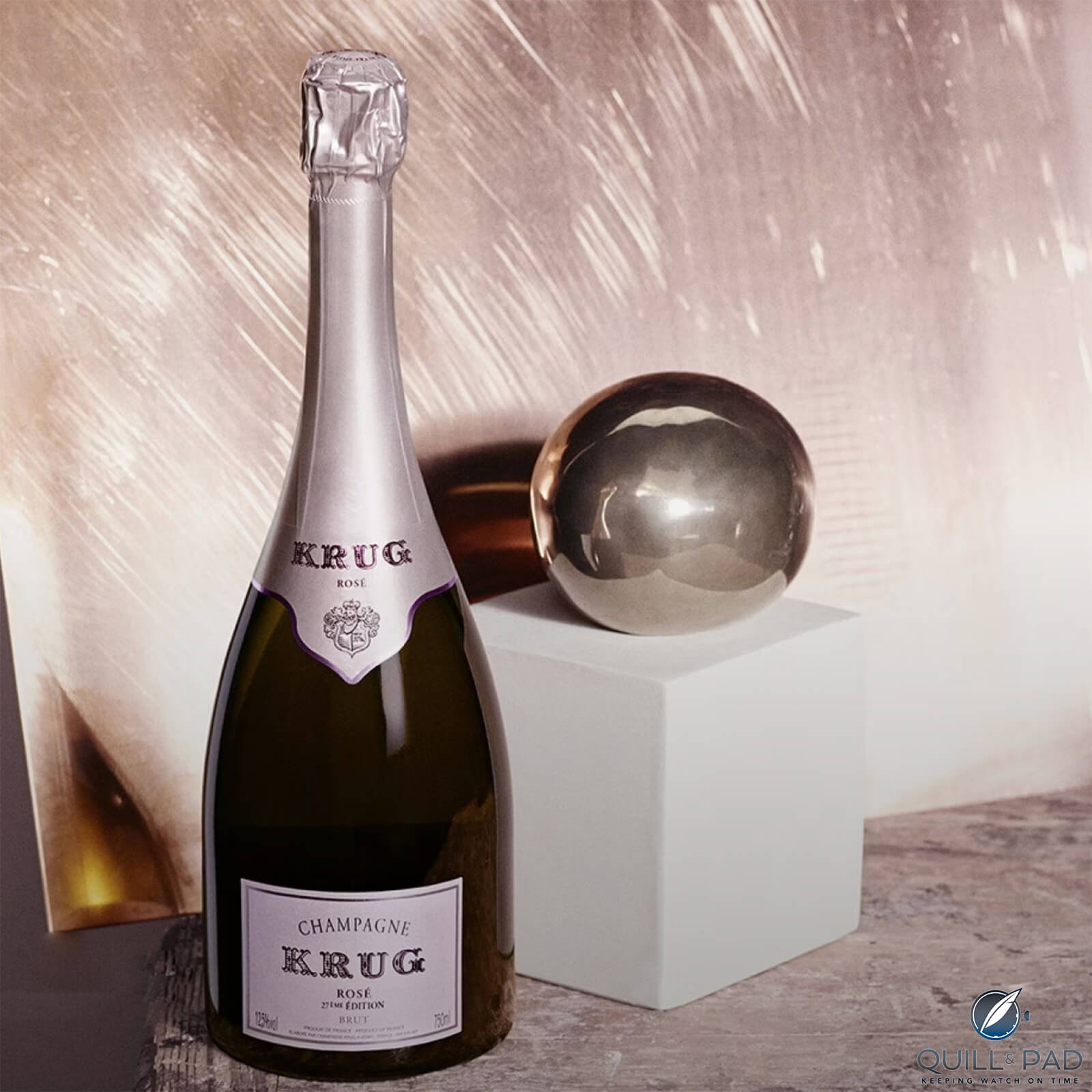
Krug Rosé 27th edition champagne
Krug do the same for their multi-vintage Rosé, the current one the 27th Edition , based on 2015 with wines from eight other years. Krug Rosé is a much more recent creation.
What is interesting is that this has created a varied secondary market for Grande Cuvee. So the 164th edition, which was based on the scintillating 2008 vintage (please remember that these wines can have hundreds of components from numerous vintages, as well as grapes and villages – as an example, the 166th Edition comprises more than 120 wines), is very much in demand.
This is a little silly as the various releases are very similar, granted not identical, and you’ll get a superb wine whichever you purchase.
—————————————————————————————————–
—————————————————————————————————–
Louis Roederer has also completely revamped their approach to non-vintage champagnes, with their Collection Series, but as we have looked at these on several occasions, including very recently, we’ll leave it to those pieces for now.
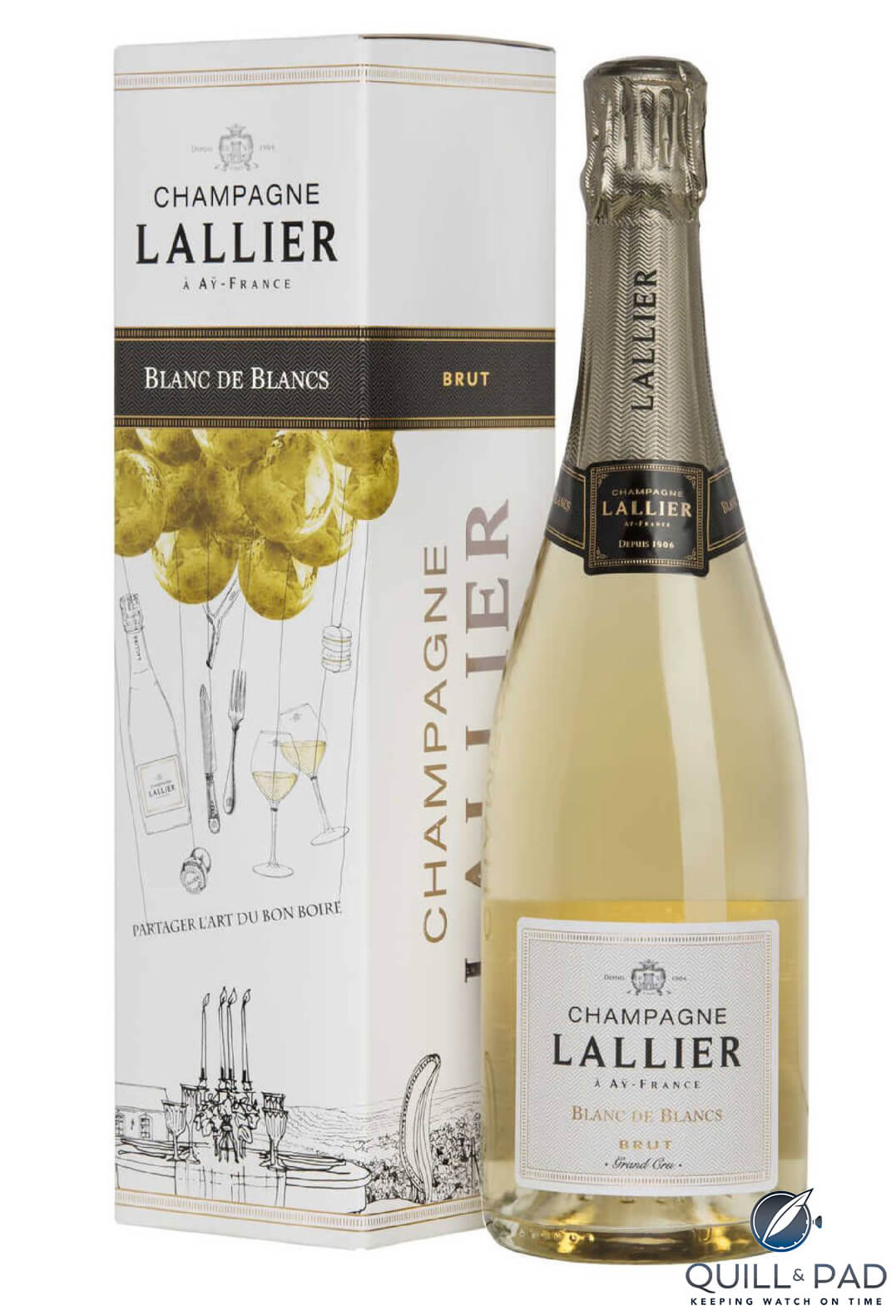
Champagne Lallier Blanc de Blancs magnum
We also looked at Lallier a while back, and they have recently released their latest multi-vintage, which is named Lallier R.020. This is an acknowledgement that the wine is based on the 2020 vintage.
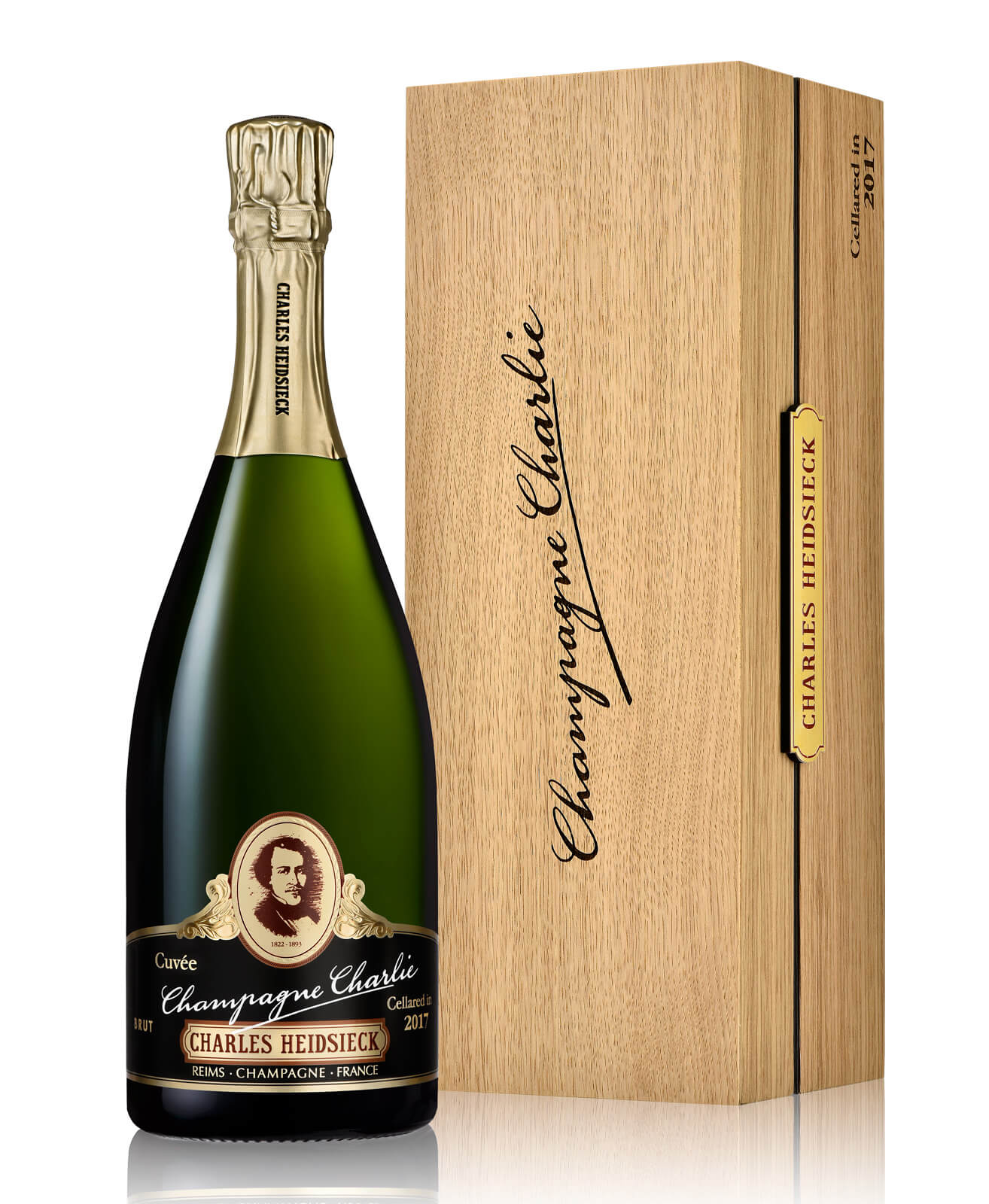
Charles Heidsieck Champagne Charlie
We have also seen the revival of Charles Heidsieck’s Champagne Charlie. This was a legendary champagne from the late 1970s, early 1980s, but it has been resurrected as a multi-vintage rather than a vintage (given its pricing in comparison to their House’s prestige Blanc des Millénaires, which at least at this early stage seems the better wine, I am a bit in limbo on this one – the first release was, I believe, based on the 2016 vintage, far from one of my favorite years, so perhaps I can hope for better in future).
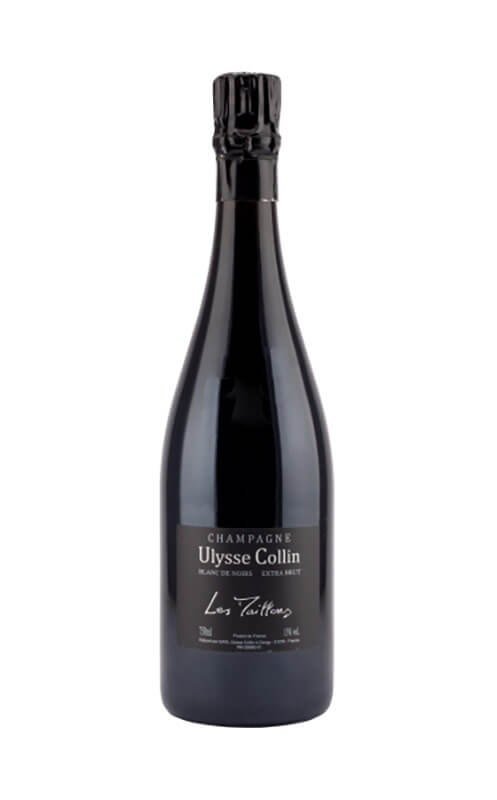
Ulysse Collin Les Maillons champagne
I have also focused on the brilliant champagnes of Ulysse Collin on several occasions. Olivier Collin has never made a single wine to be released as a vintage champagne (despite what one often sees on wine lists), but rather great champagne based on successive vintages, but usually including reserve material as well.
—————————————————————————————————–
—————————————————————————————————–
There are also some one-off superstar releases from producers, as non-vintage champagnes. Pierre Peters would be a good place to start for anyone looking for those.
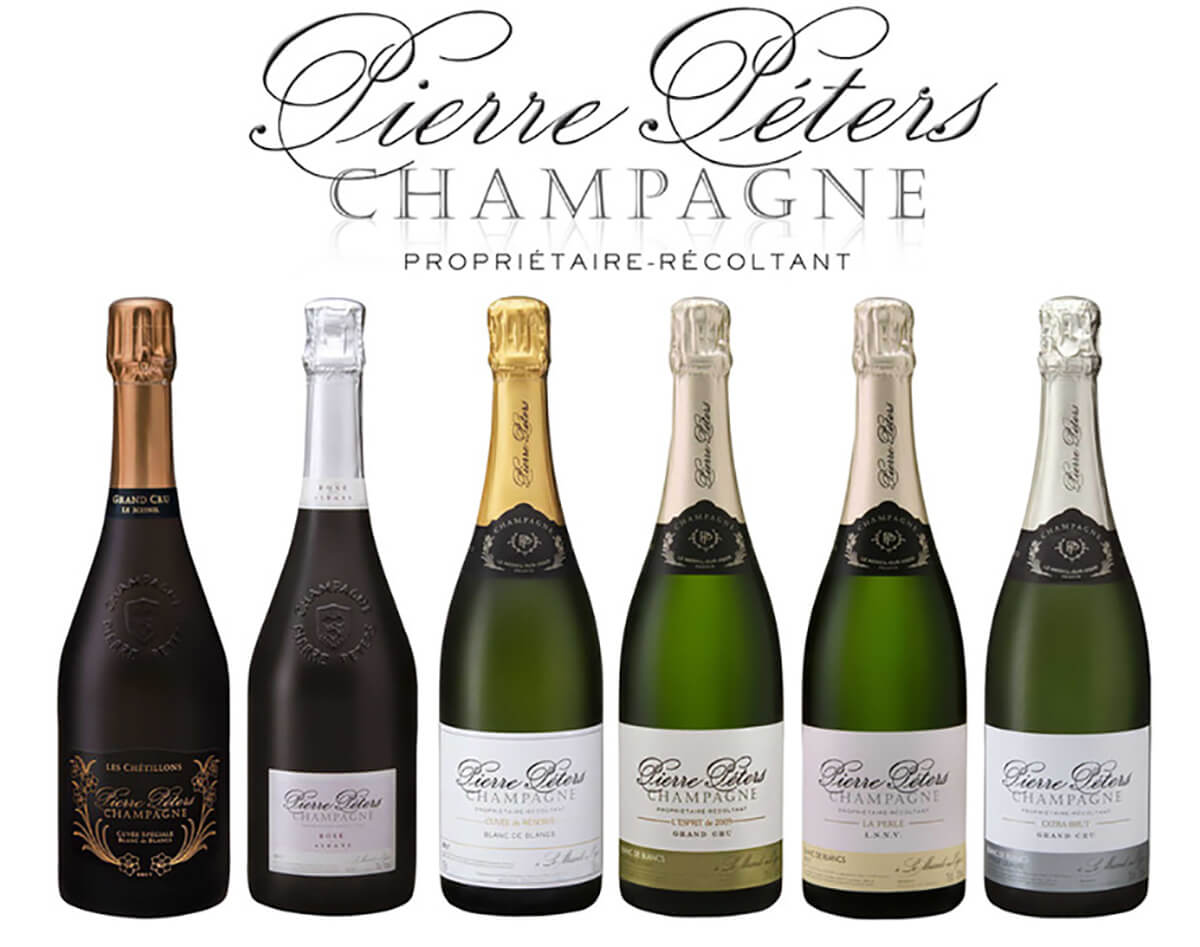
Pierre Peters Champagnes
Caught up with a friend recently, the inimitable Bernadette O’Shea, a champagne expert and educator and the person with the finest champagne palate I have ever seen, to open a few bottles and chat about all things champagne.
By chance, all of the wines we looked at were non-vintage. This was not by design and there was a time when such a thing would have been unthinkable. As it happened, we enjoyed three truly superb non-vintage (or better yet, multi-vintage) champagnes.
The first was the Laurent-Perrier Grand Siècle No 26. It is a truly awesome champagne. Grand Siècle more than deserves its own story. Briefly, this latest release is a blend of 58% Chardonnay and 42% Pinot Noir from three wonderful vintages – the brilliant 2012 (65%), the sensational 2008 (25%) and a great year for Chardonnay, 2007 (10%). Ten years on lees. Other critics have given this 100 points and it is easy to see why. One of the great Grand Siècle champagnes.

Ulysse Collin Les Perrières champagne
We followed that with one of my favorite producers as mentioned above, Ulysse Collin, and his Blanc des Blancs, ‘Les Perrieres’, disgorged in 2021 from the 2017 base. It was drinking immaculately. Stunning stuff.
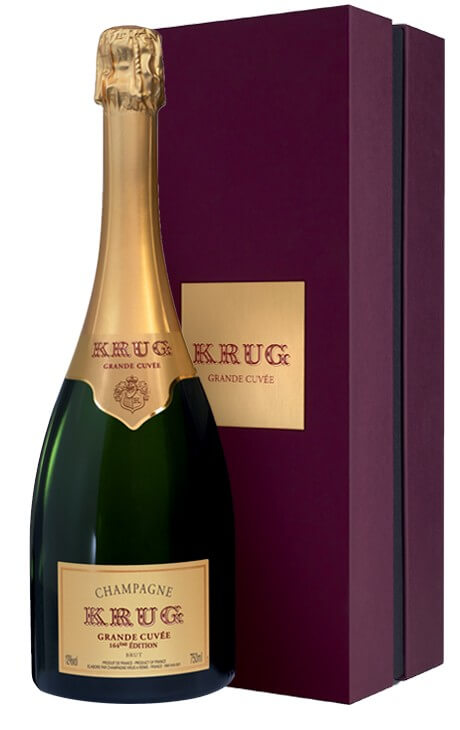
Krug Grande Cuvée #164
Finally, we opened one of those famed Krug multi-vintages, the 164th Edition (yes, that very one based on 2008). Put simply, it was every bit as good as one could wish. Wonderfully complex, incredibly long, truly stupendous.
Finally, for anyone who wonders whether multi-vintage wines can mature over time in the cellar, a few weeks before this, a friend generously opened an old Krug Grande Cuvee. Records were fuzzy, but he believed he had purchased it back around 2001, so it could have been based on any number of vintages – one from the great trio of 1988, 1989 or 1990, or possibly the mid-90s duo, 1995 or 1996. It didn’t matter. A wine that blew us away – still alive, complex, concentrated.
Anyone who automatically dismisses non/multi-vintage champagnes these days is doing themselves a grave disservice.
You might also enjoy:
Champagne Lallier: Getting into the Ground Floor Early
Ulysse Collin: Grower Champagnes With Serious Elegance
It’s ‘Champagne Day’ with Krug: Pop the Cork and Cheers!
Pierre Peters Les Chétillons: One Of The World’s Great Champagnes You’ve Probably Never Heard Of
Charles Heidsieck Champagne Charlie: A Man, A Bottle, A Legend
Leave a Reply
Want to join the discussion?Feel free to contribute!

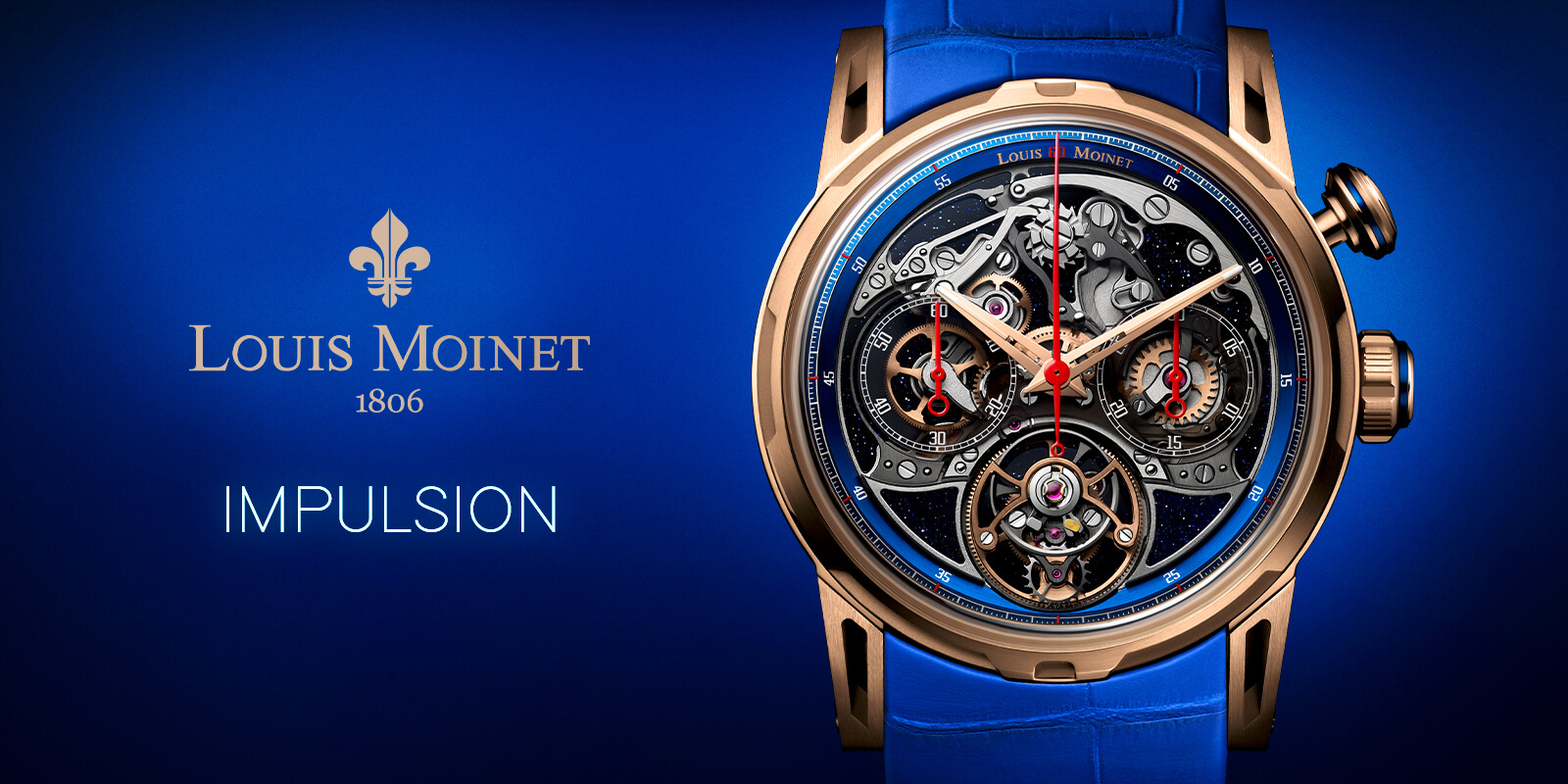
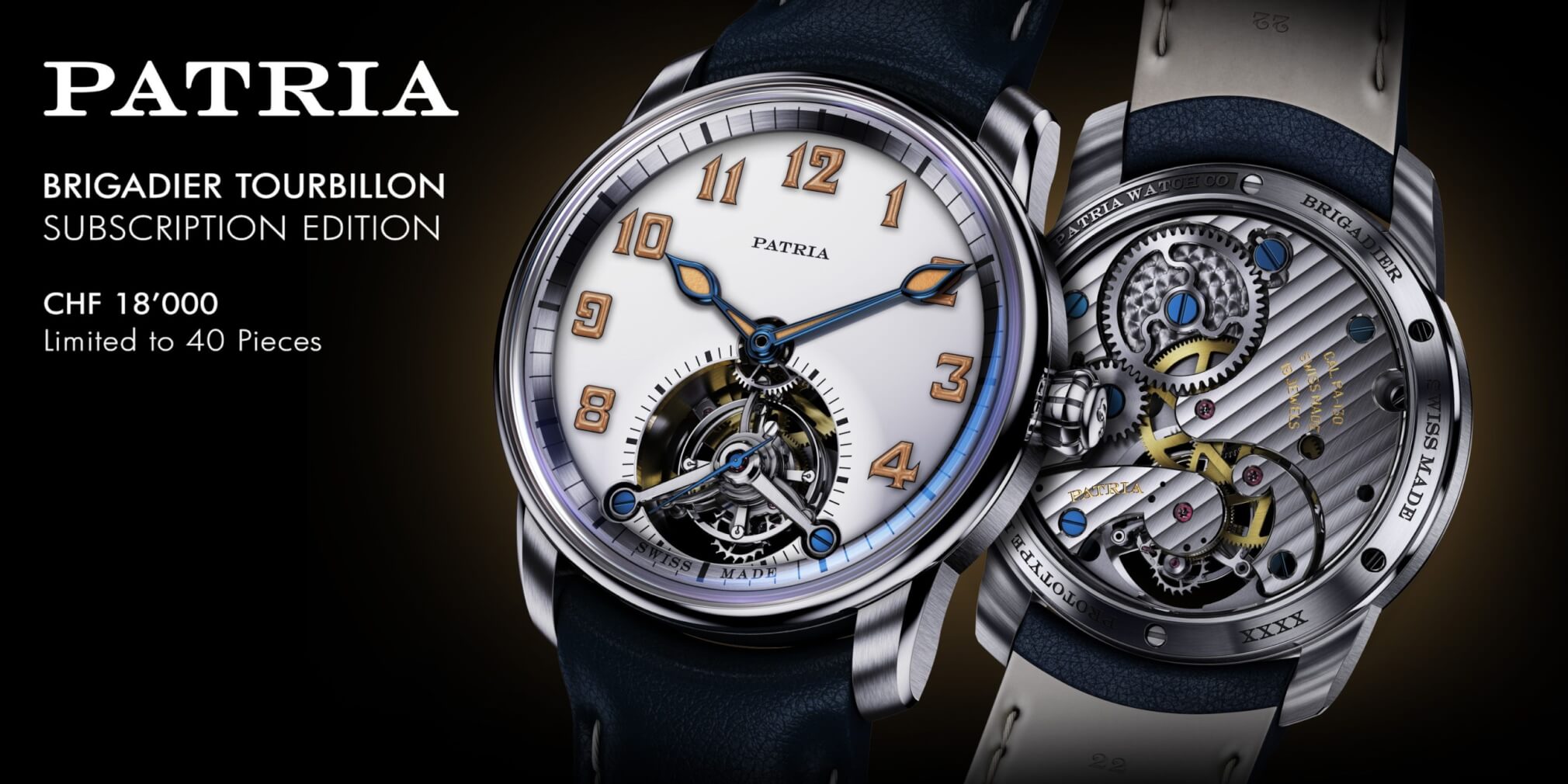


Excellent article, Ken.
Cheers
KP
Thanks Kaaren, much appreciated.